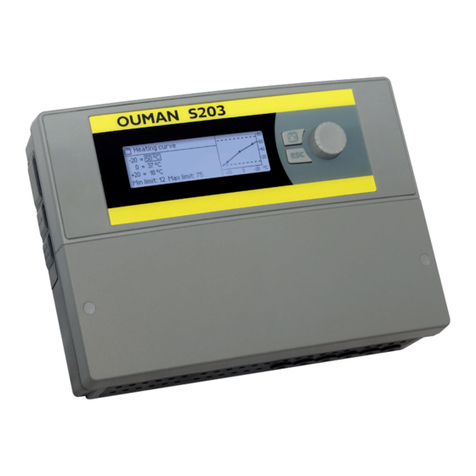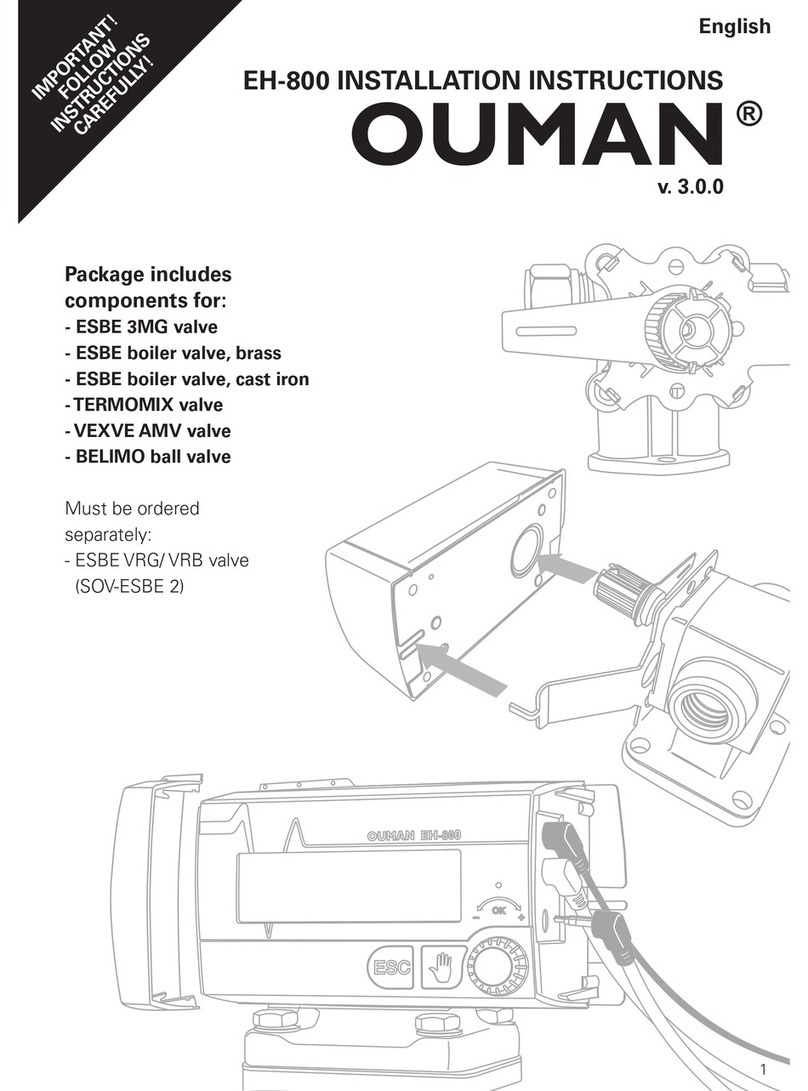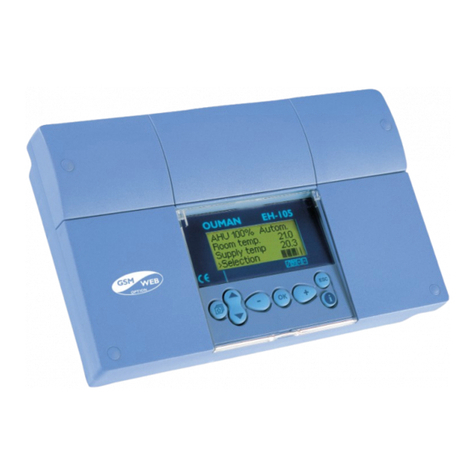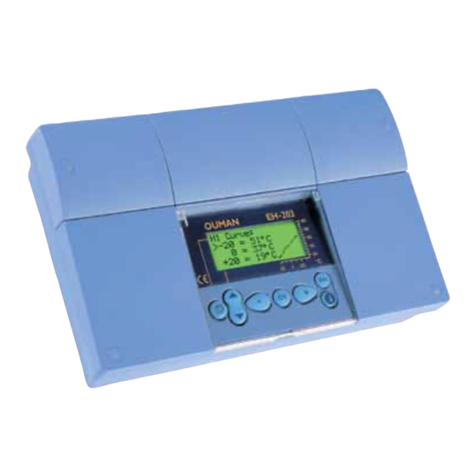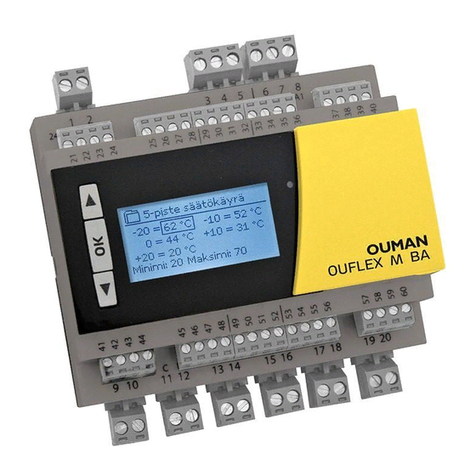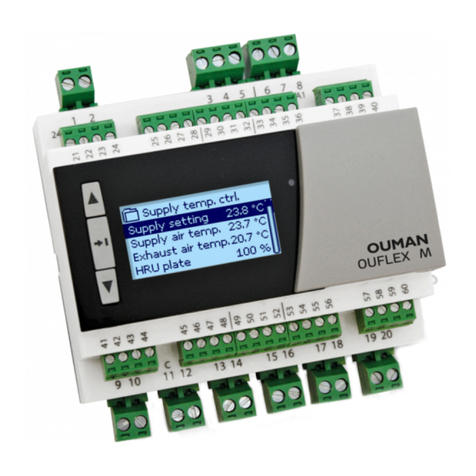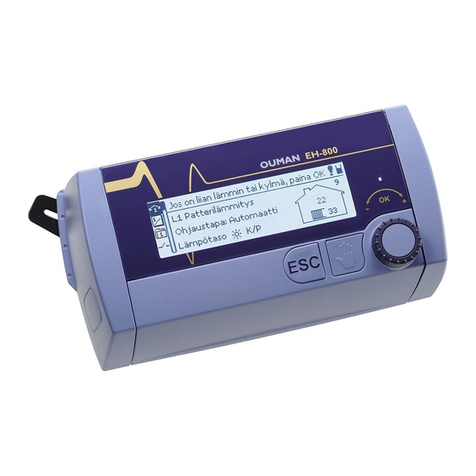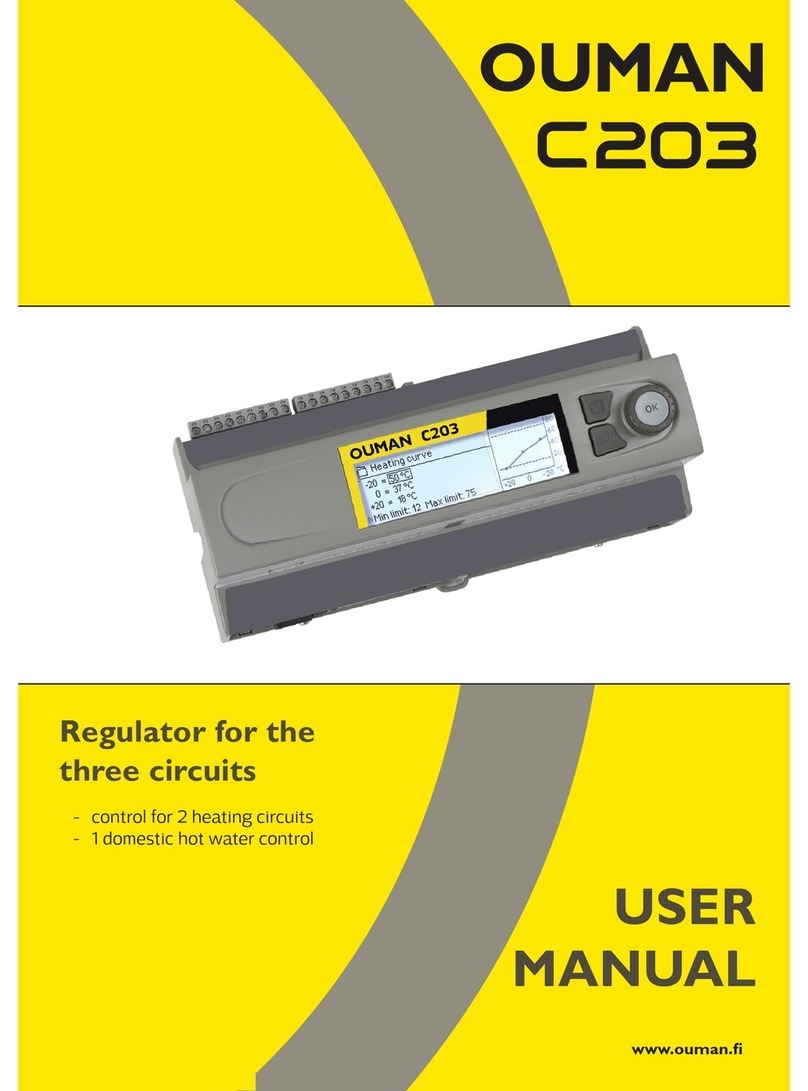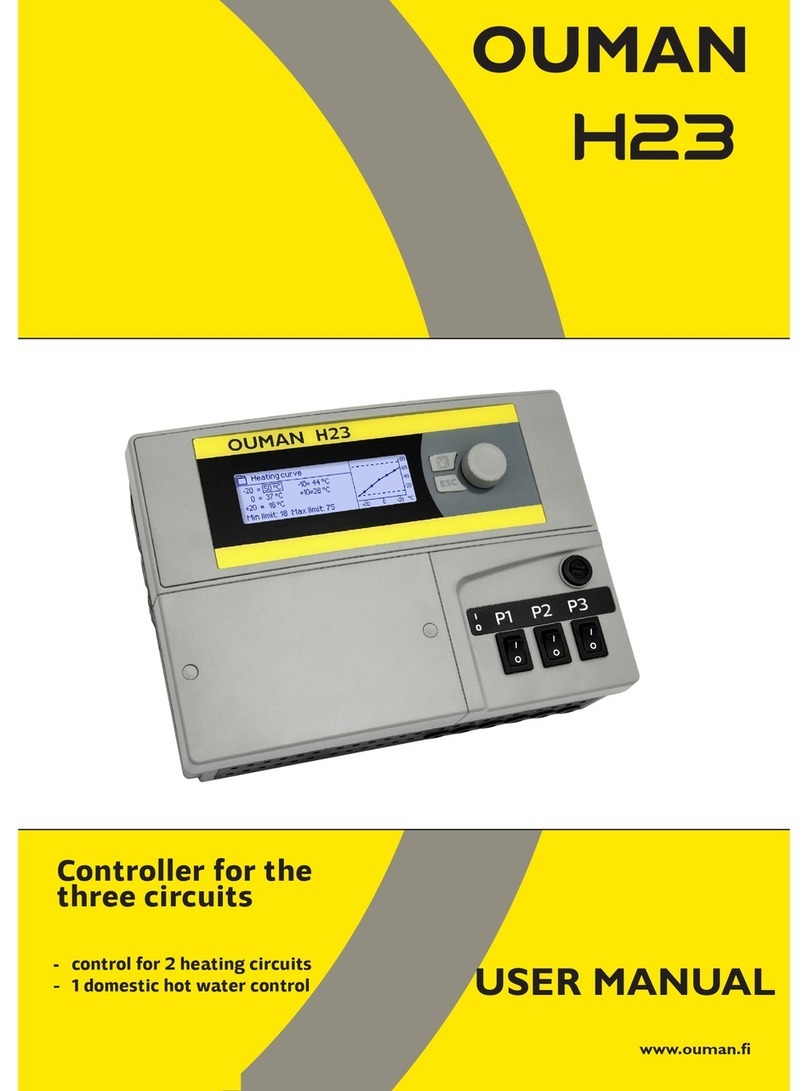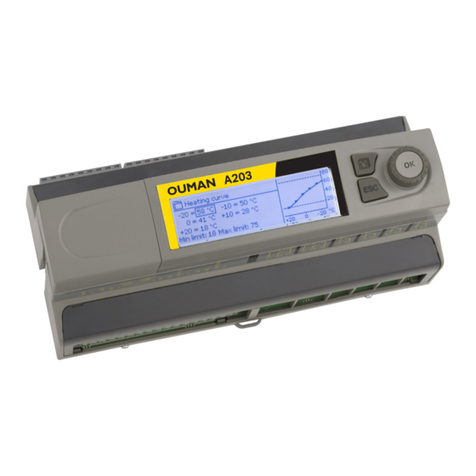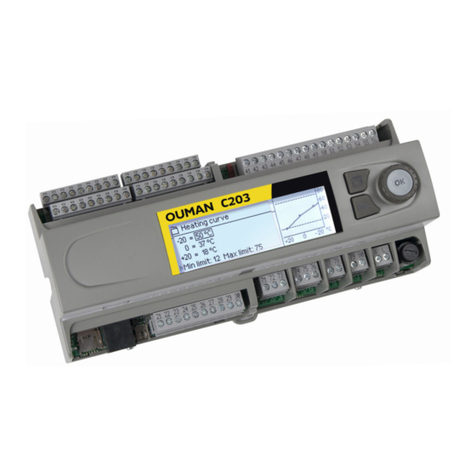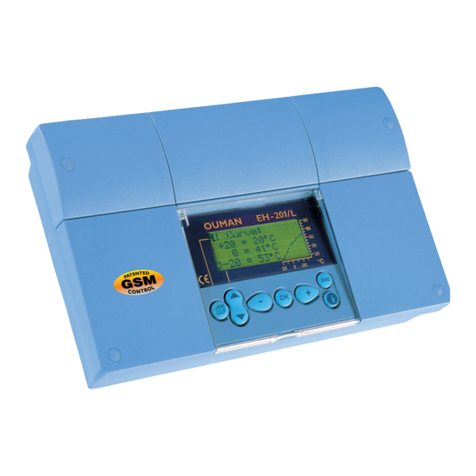
OUMAN EH-203
6
SETTINGS
Settings: Factory
settings:
Explanation: Attention!Range:
Room sensor (TMR) must be con-
nected (H1:meas.3, H2: meas. 6, or
net). An appropriate room compen-
sation ratio for oor heating is usu-
ally between 1.5 - 2.0°C.
Transmitter must be connected,
the same sensor for regul. circuits
H1 and H2 (meas. 6).
Changing the domestic hot water temperature:
Changing the heating regulating circuit setting:
Press the button to move the cursor to the setting that you want to
change. Press OK. Press the -or + button to change the setting.
Press OK. Exit with ESC.
H1 Settings
Room temp. 21.5
Temp drop(w) 0
Min.limit 15
Max.limit 70
Parall.shift 0
RoomCompens. 4
E-compens.r.
0
Pre-increase 0
Autumn dry 2
Burner ON 70
El.Heater ON 50
Valve close 19
R1 Temp.lim. 55
H1 Select
Heating curve
Settings
Measurements
HW Settings °C
DomHot wat. 55.0
HW
H2 Automatic
H1 Automatic
Outdoor -15°C
SupplyTemp52°C
Selection
Room temp.
Temp drop (w)
(supply water)
Min. limit
Max. limit
Parall.shift
Room compens.
E-compens.r.
Room temperature setting, which user has set.
During temp. drop period regulator use the calculated room
temp. setting.
The supply water temperature drop, determined by the clock
program or the external home/away switch. (Room com-
pensation takes a desired drop in room temperature into ac-
count).
Minimum allowed supply water temperature. Set the minimum
limit for oor heating circuit tiled oors between 20...25°C, to
ensure a comfortable temperature and removal of moisture in
the summer.
Maximum allowed supply water temperature.
The maximum limit prevents the temperature in the heating
circuit from rising too high, preventing damage to pipes and
surface materials. If, e.g., the characteristic heating curve set-
ting is incorrect, the maximum limit prevents excessively hot
water from entering the network. Set the upper limit for oor
heating between 35...40°C.
A parallel shift occurs when a change in supply water tem-
perature occurs at each adjustment point.
Room compensation ratio: If the room temperature is different
than what it is set at, the room compensation corrects the
supply water temperature. (Eg.) If the room compensation is
4 and the room temperature has risen 1,5 °C above the set-
ting, the regulator drops the supply water temperature 6 °C
(4x1,5 °C =6 °C)
E-compensation ratio: Compensation relation shows how
much the E-compensation can, at the most, make the heating
water temperature rise or sink. E-compensation is used for
example where wind and sun measurement is used.
21,5 °C
0 °C
15 °C
70 °C
0 °C
4.0 °C
0 °C
5...45 °C
0...35 °C
5...70 °C
15...125 °C
-15...+15 °C
0.0...7.0 °C
-15...15 °C
In Ouman EH-203 the regulator is controlled by many different
settings. Settings are selected according to sensor connections
and relay control modes (e.g., is a relay controlling the oil
burner or pump or is the relay temperature controlled see p. 26-27).
By browsing you can see which settings you have in use.
Browsing and setting changes occur in the following way:
Use the button to move to domestic hot water
regulating circuit (HW). Press OK.
Press the - or + button to change the setting. Press
OK. Exit with ESC.
Press the button to move cursor to ”Settings”. Press OK.
INFORMATION ABOUT SETTINGS:
Room compens.
Temp drop(w)
80
65
50
35
20
-20 °C020
Maximum limit
80
65
50
35
20
-20 °C020
Parallel shifts
80
65
50
35
20
-20 °C020
Minimum limit
OPERATING INSTRUCTION:
Press ESC until the display no longer changes.
You are then in the ”Selection” display shown in the adjoining picture.
Use the button to move from one regulating circuit to the next (H1, H2, HW).
Calculated room temp. setting =






